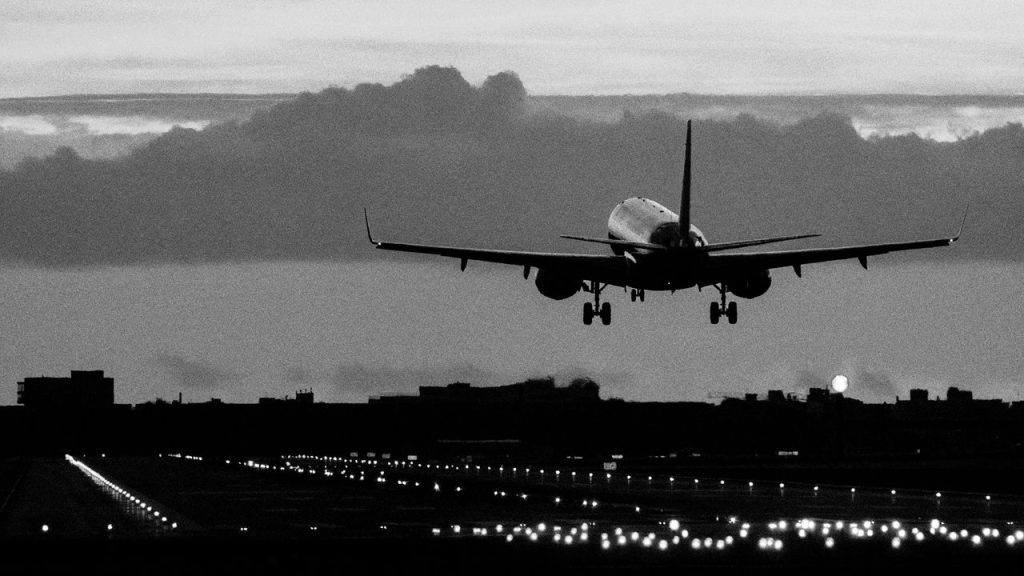For all their collective power and influence, this ensemble had watched helplessly as previous deals collapsed. Political prisoners set to be traded had died inexplicably, or inched toward death, in Russian penal colonies. CIA officers had flown thousands of miles to remonstrate with Russian spies in hotel conference rooms in Central Europe and the Persian Gulf, booked under false names—only to fly home empty-handed. An Academy Award winner had traveled to Monaco for a ride in the white Rolls Royce of a Russian spy who claimed he could get a message to Putin. All told, two of the most powerful governments on Earth and their allies dedicated enormous energy and attention into haggling over a list of names that, as the jets neared their rendezvous, totaled just twenty-four prisoners and two children.
Now, like the conductor of a symphony nearing a finale, the officer in the control tower was ordering the six jets to touch down in a perfect line just thirty meters apart. Silhouetted figures imprisoned in seven countries would step down to cross one another on the tarmac, a glimpse into an unseen struggle that had been playing out for more than a decade.
At every step, the clandestine talks and backchannel interventions had been tracked by the two of us—Wall Street Journal reporters who had covered hostage crises across the world and now found ourselves trying to make sense of a crisis that had somehow reached our own newspaper. Just weeks before our colleague’s arrest, he had proposed we should together investigate the pattern of Americans mysteriously vanishing into Russian prisons: “It’s totally undercovered,” Evan said, before Putin lent his pitch a grimly ironic news hook.
Left to investigate a game of “hostage diplomacy” ensnaring more Americans than their government could manage, we plunged into the murky terrain of prisoner talks, where rival governments barter over human lives. In his jail cell, Evan never stopped reporting, and he and the other American prisoners would soon tell their own stories. We wanted to show the flip side of the coin: the years of rolling negotiations it took to bring home one batch of Americans after the next. And we wanted to answer how exactly had America and Russia fallen into such a vicious and retaliatory cycle of snatching and trading each other’s citizens, which has somehow become a central tool of modern statecraft, a mechanism for nuclear powers to inflict pain on one another without tipping into war.
We traveled the world to meet the intelligence chiefs, spy hunters, diplomats, and mediators wrapped up into this ruthless business. The contest they described went back much further than we realized, pitting an embattled democracy whose law still reaches further than any government’s on Earth against a revanchist autocracy playing by its own rules. And their fight was spilling far beyond Washington and Moscow onto a global battlefield, from the trenches of Ukraine to a hotel suite in Bangkok, an airstrip in the Maldives, and a suburban home in the Alps.
The more we peered into this world, the more Russia stared back. We were followed through the streets of Vienna and Washington in acts of surveillance apparently designed to intimidate. Our emails and phones were bombarded with password-reset attempts, and the shared files on our cloud opened at hours when we were fast asleep. The Russian Foreign Ministry would later declare us personae non gratae.
This is the story of a shadow war that few Americans understood was underway. In the fog of this new pirate world, a careful observer could glimpse a discomforting truth: To play this game of snatch-and-trade, America and its high-minded allies would have to ask themselves, how much were they willing to be like Russia?
From the SWAP: A Secret History of the New Cold War by Drew Hinshaw and Joe Parkinson. Copyright © 2025 by Drew Hinshaw and Joe Parkinson. Published by Harper, an imprint of HarperCollins Publishers. Reprinted by permission.

